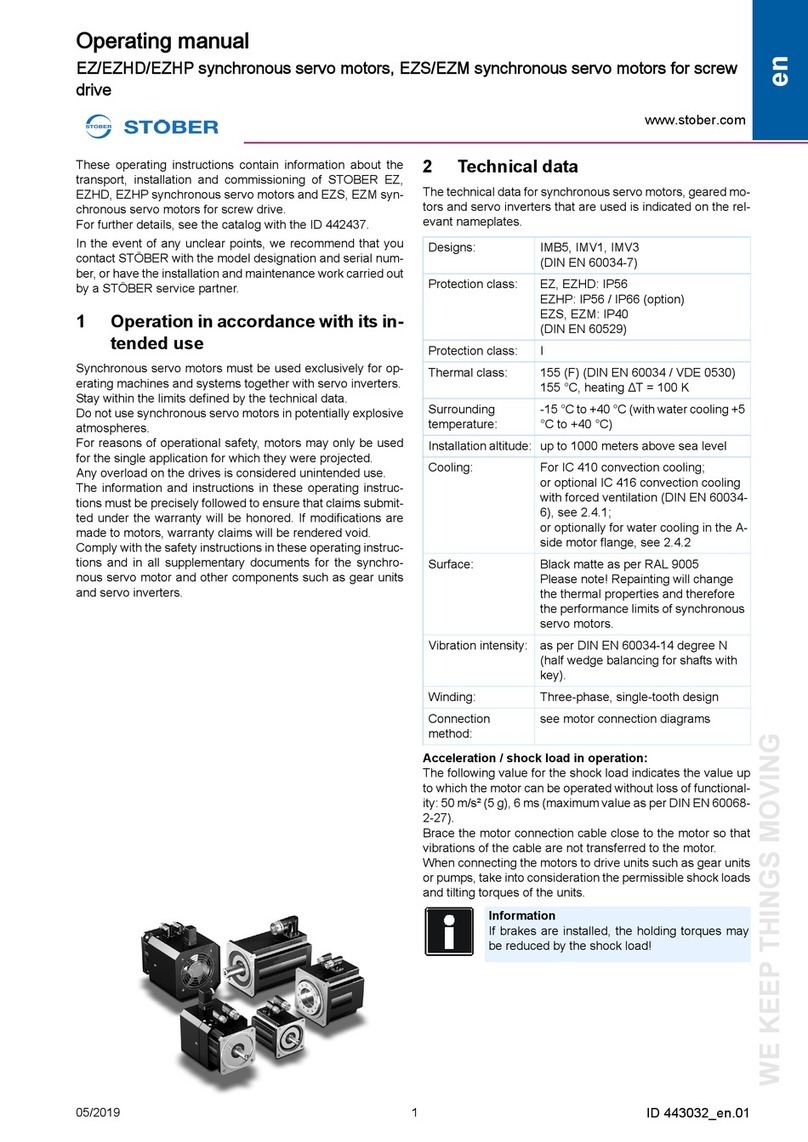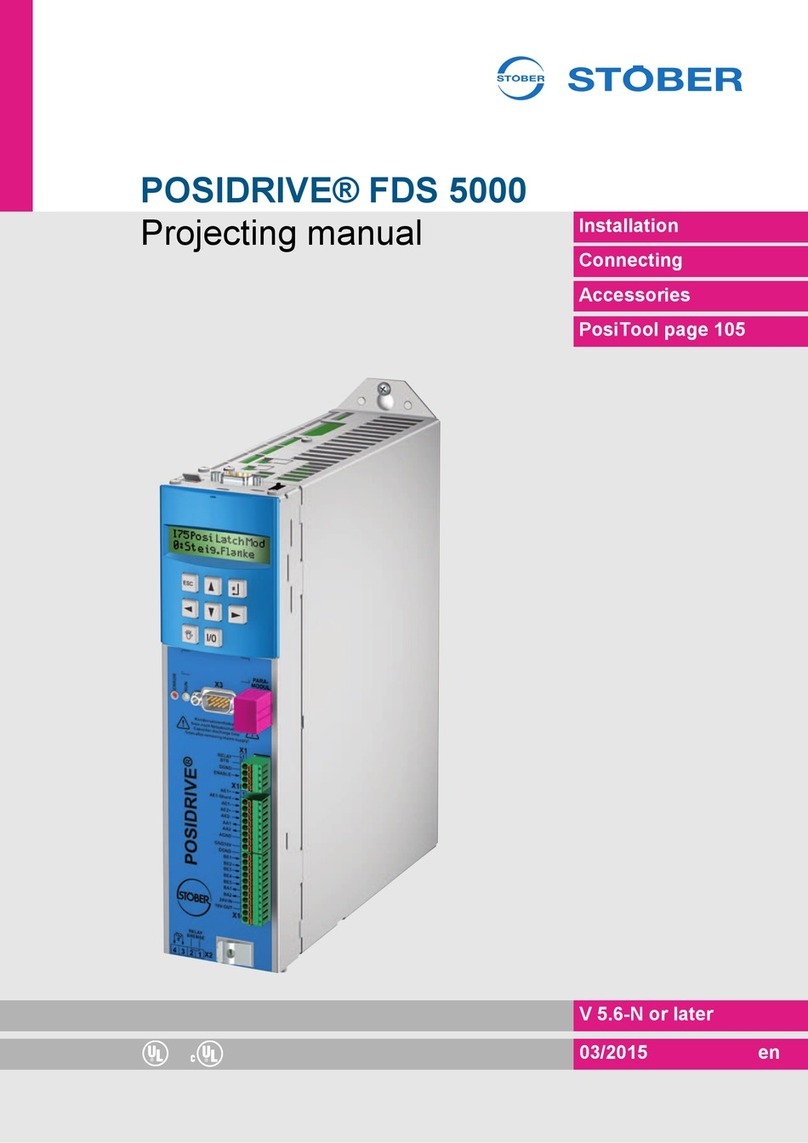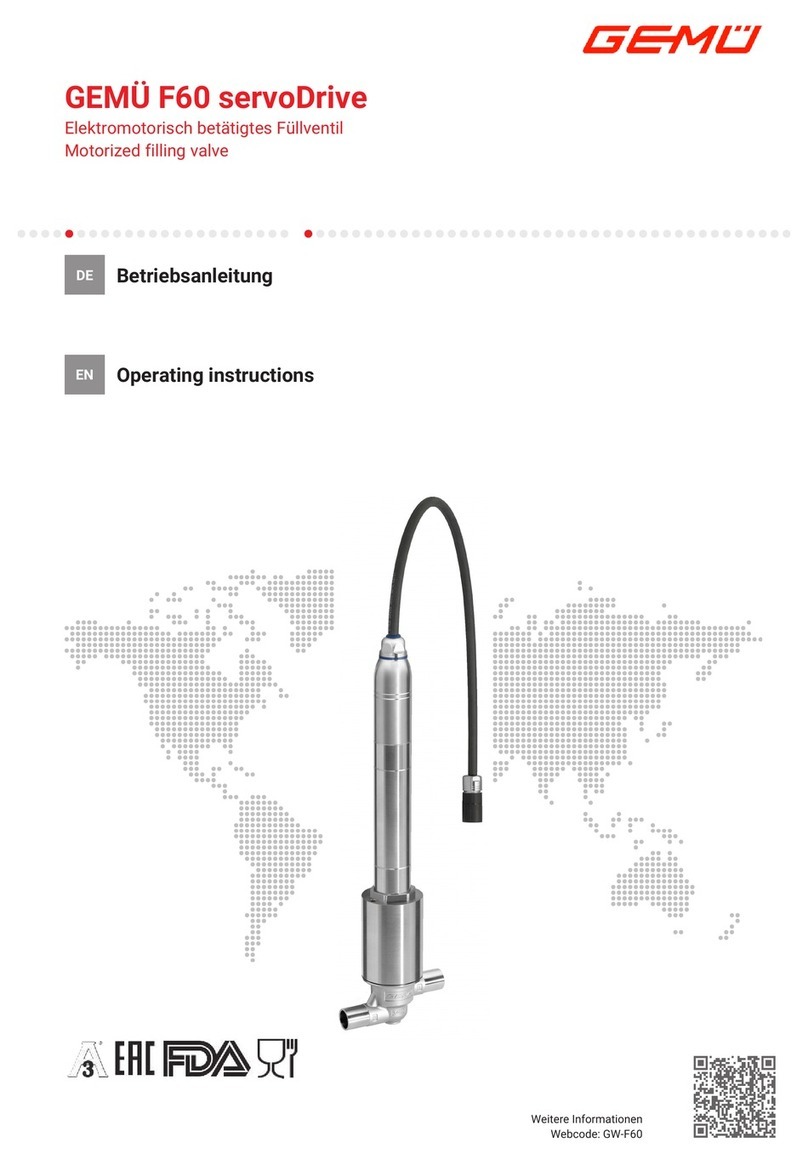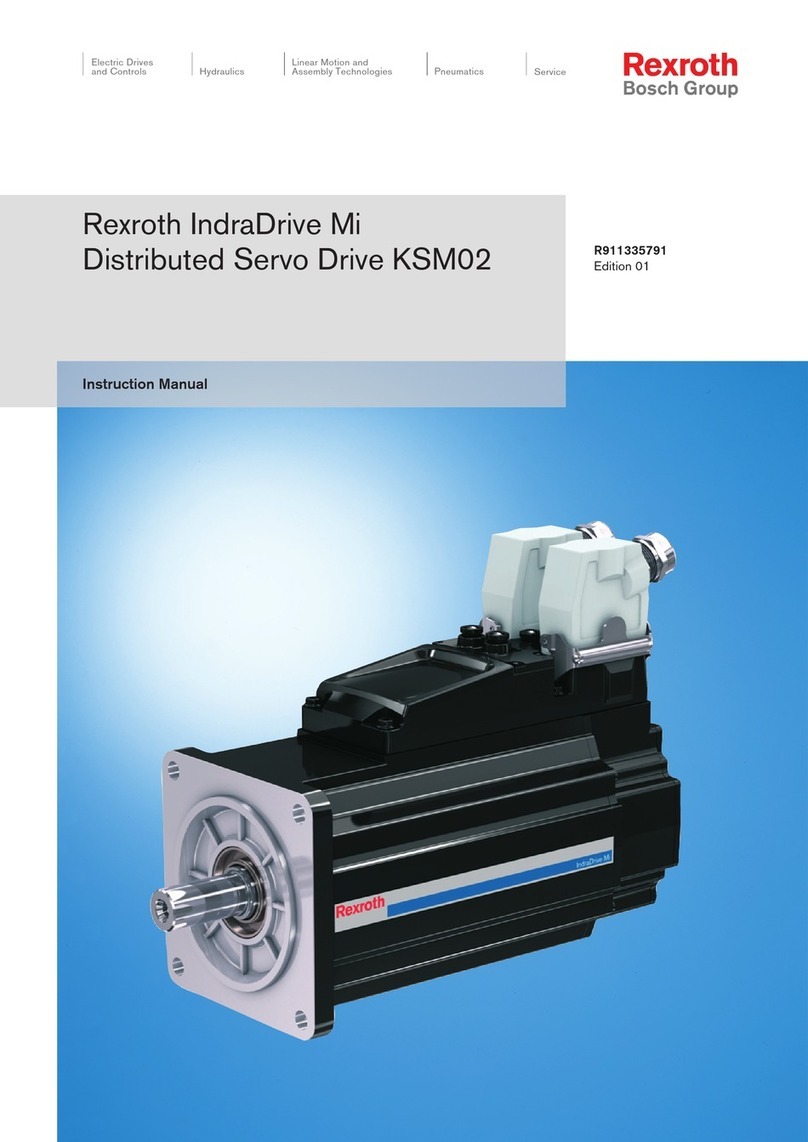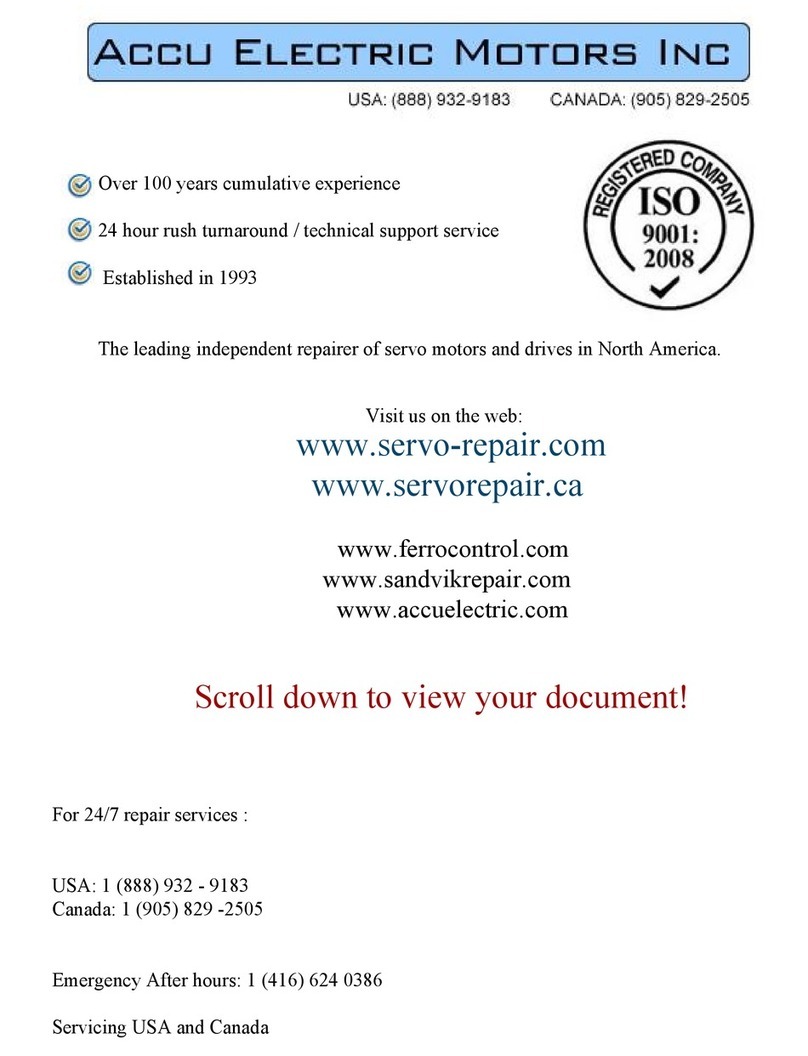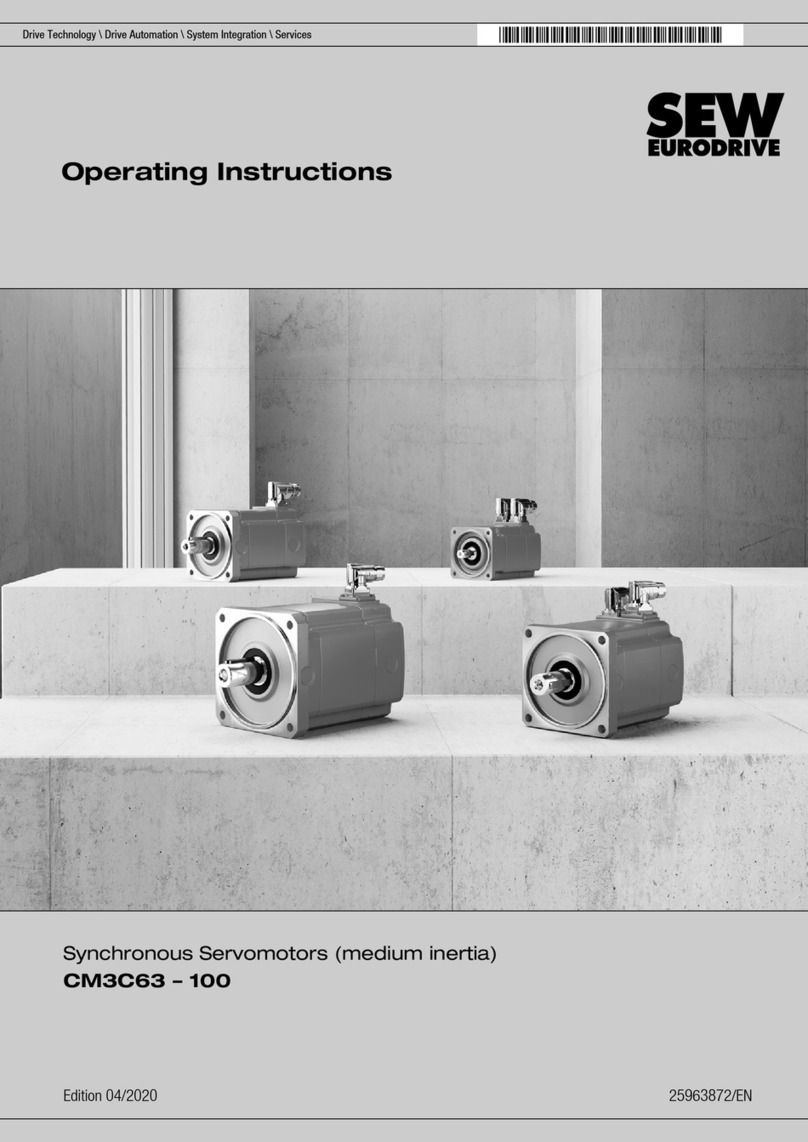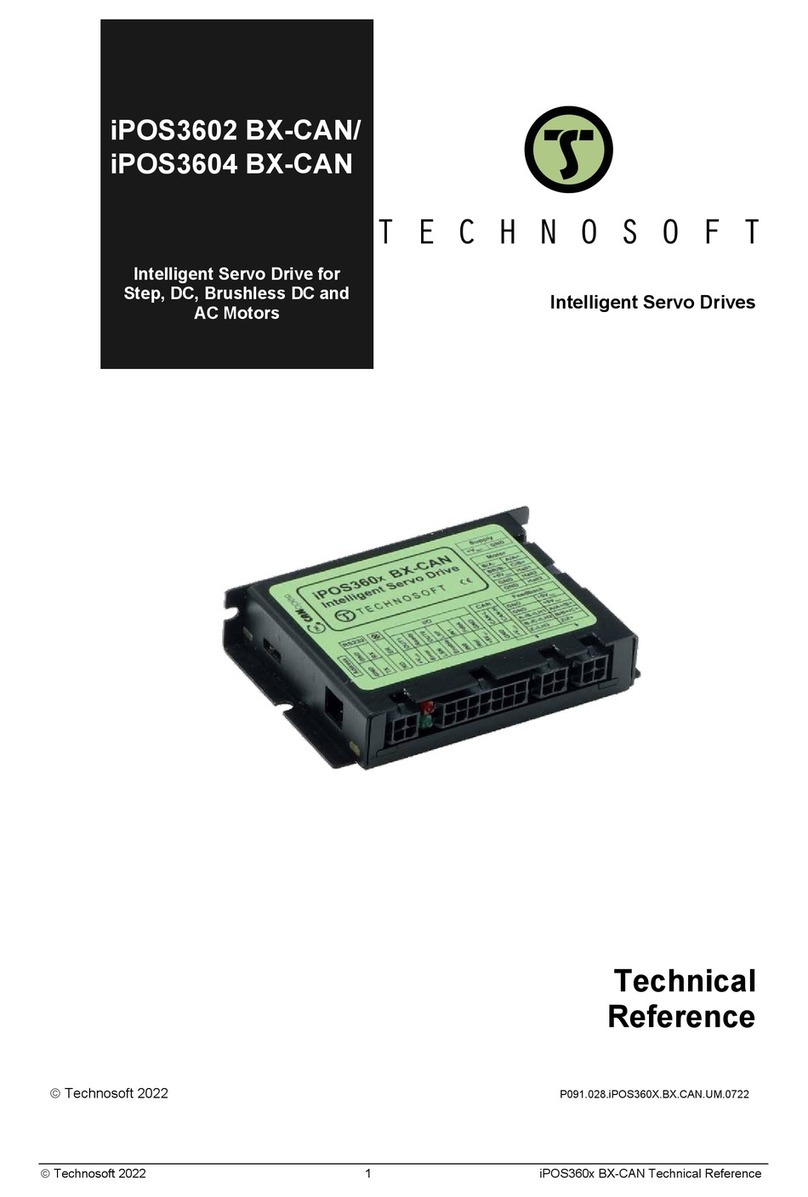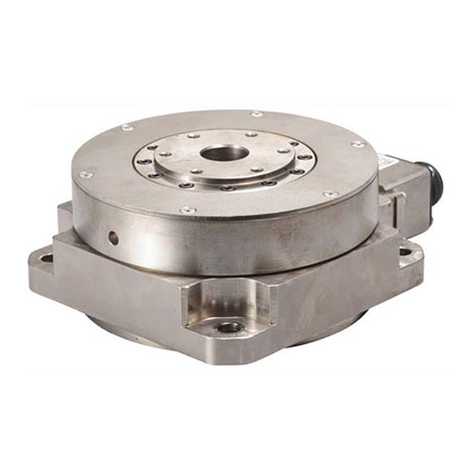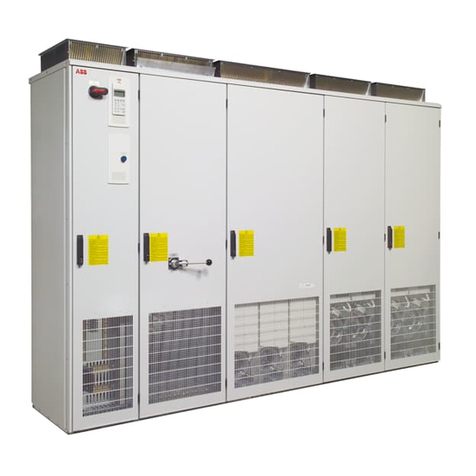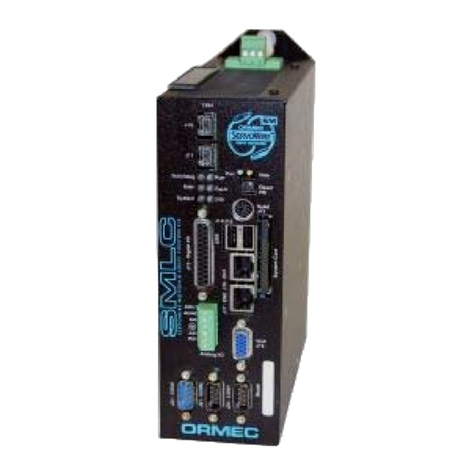Stober SC6 Series User manual

EtherCAT – SC6 and SI6
Operating manual
en-US
02/2020
ID 443025.06

Table of contents STOBER
ii
02/2020 | ID 443025.06
Table of contents
1 Foreword .................................................................................................................................................................. 5
2 User information ....................................................................................................................................................... 6
2.1 Storage and transfer ................................................................................................................................................ 6
2.2 Described product.................................................................................................................................................... 6
2.3 Timeliness ................................................................................................................................................................ 6
2.4 Original language ..................................................................................................................................................... 6
2.5 Limitation of liability ................................................................................................................................................ 6
2.6 Formatting conventions........................................................................................................................................... 7
2.6.1 Use of symbols........................................................................................................................................ 7
2.6.2 Markup of text elements ........................................................................................................................ 8
2.6.3 Mathematics and formulas..................................................................................................................... 8
2.7 Trademarks .............................................................................................................................................................. 9
3 General safety instructions...................................................................................................................................... 10
3.1 Directives and standards........................................................................................................................................ 10
3.2 Qualified personnel................................................................................................................................................ 10
3.3 Intended use ..........................................................................................................................................................10
3.4 Operational environment and operation...............................................................................................................10
3.5 Disposal.................................................................................................................................................................. 11
4 Network structure ................................................................................................................................................... 12
5 Connection.............................................................................................................................................................. 13
5.1 Selecting suitable lines...........................................................................................................................................13
5.2 X200, X201: Fieldbus connection...........................................................................................................................13
6 What you should know before commissioning ........................................................................................................ 14
6.1 Program interfaces................................................................................................................................................. 14
6.1.1 DS6: Structure of the program interface .............................................................................................. 14
6.1.2 AS6: Structure of the program interface .............................................................................................. 16
6.1.3 TwinCAT 3: Structure of the program interface.................................................................................... 17
6.2 Meaning of parameters .........................................................................................................................................18
6.2.1 Parameter groups ................................................................................................................................. 18
6.2.2 Parameter types and data types........................................................................................................... 19
6.2.3 Parameter types ................................................................................................................................... 20
6.2.4 Parameter structure ............................................................................................................................. 20
6.2.5 Parameter visibility ............................................................................................................................... 21
6.3 Power-loss protected storage................................................................................................................................ 21

STOBER Table of contents
02/2020 | ID 443025.06
iii
7 Commissioning ........................................................................................................................................................ 22
7.1 DS6: Configuring the drive controller .................................................................................................................... 23
7.1.1 Initiating the project ............................................................................................................................. 23
7.1.2 Parameterizing general EtherCAT settings ........................................................................................... 24
7.1.3 Configuring PDO transmission .............................................................................................................. 25
7.1.4 Mapping the mechanical axis model .................................................................................................... 26
7.1.5 Synchronizing EtherCAT nodes ............................................................................................................. 29
7.1.6 Transmitting and saving the configuration........................................................................................... 30
7.2 AS6: Putting the EtherCAT system into operation ................................................................................................. 31
7.2.1 Creating a standard project .................................................................................................................. 31
7.2.2 Adding a drive controller ...................................................................................................................... 32
7.2.3 Configuring synchronization using distributed clocks........................................................................... 32
7.2.4 Parameterizing a SoftMotion axis......................................................................................................... 33
7.2.5 Configuring EoE communication........................................................................................................... 34
7.2.6 Identifying a MC6 motion controller .................................................................................................... 34
7.2.7 Transmitting a project configuration .................................................................................................... 35
7.2.8 Checking the functionality of the axes.................................................................................................. 35
7.2.9 Special case: Adding to the PDO transmission...................................................................................... 36
7.3 TwinCAT 3: Putting the EtherCAT system into operation ......................................................................................37
7.3.1 Creating and exporting an ESI file......................................................................................................... 37
7.3.2 Activating the EtherCAT master............................................................................................................ 38
7.3.3 Scanning the hardware environment ................................................................................................... 39
7.3.4 Configuring synchronization using distributed clocks........................................................................... 40
7.3.5 Parameterizing an axis.......................................................................................................................... 40
7.3.6 Configuring EoE communication........................................................................................................... 41
7.3.7 Transmitting a project configuration .................................................................................................... 41
7.3.8 Checking the functionality of the axes.................................................................................................. 42
8 Monitoring and diagnostics ..................................................................................................................................... 43
8.1 Connection monitoring .......................................................................................................................................... 43
8.2 LED display ............................................................................................................................................................. 43
8.2.1 EtherCAT state ...................................................................................................................................... 43
8.2.2 EtherCAT network connection.............................................................................................................. 44
8.3 Events..................................................................................................................................................................... 45
8.3.1 Event 52: Communication..................................................................................................................... 45
8.4 Parameters............................................................................................................................................................. 46
8.4.1 A255 | EtherCAT Device State | V2 ...................................................................................................... 46
8.4.2 A256 | EtherCAT Address | V1 ............................................................................................................. 46
8.4.3 A257 | EtherCAT Diagnosis | V1 ........................................................................................................... 47
8.4.4 A259 | EtherCAT SM-Watchdog | V1 ................................................................................................... 48
8.4.5 A261 | Sync-Diagnostics | V1 ............................................................................................................... 48

Table of contents STOBER
iv
02/2020 | ID 443025.06
9 Looking for more information about EtherCAT? ...................................................................................................... 49
9.1 EtherCAT ................................................................................................................................................................ 49
9.2 Communication protocols...................................................................................................................................... 50
9.2.1 CoE: CANopen over EtherCAT............................................................................................................... 50
9.2.2 EoE: Ethernet over EtherCAT ................................................................................................................ 50
9.2.3 EoE: Application cases with STOBER devices........................................................................................ 51
9.3 Communication objects ......................................................................................................................................... 53
9.3.1 Process data objects – PDO .................................................................................................................. 53
9.3.2 Service data objects – SDO ................................................................................................................... 54
9.3.3 Emergency objects – EMCY................................................................................................................... 55
9.4 EtherCAT state machine......................................................................................................................................... 56
9.5 Synchronization ..................................................................................................................................................... 58
9.5.1 SM-Sync: Synchronization using SyncManager event .......................................................................... 59
9.5.2 DC-Sync: Synchronization using distributed clocks............................................................................... 60
9.6 Modular ESI files ....................................................................................................................................................73
9.6.1 Adding to a modular ESI file.................................................................................................................. 73
9.6.2 Deleting a module from the ESI file ...................................................................................................... 74
10 Appendix................................................................................................................................................................. 75
10.1 Supported communication objects........................................................................................................................ 75
10.1.1 ETG.1000.6 EtherCAT specification: 1000 hex – 1FFF hex .................................................................... 75
10.1.2 Manufacturer-specific parameters: 2000 hex – 53FF hex .................................................................... 77
10.1.3 CiA 402 Drives and motion control: 6000 hex – 65FF hex .................................................................... 78
10.1.4 Manufacturer-specific parameters: A000 hex – D3FF hex.................................................................... 81
10.1.5 CiA 402 Drives and motion control: 6800 hex – 6DFF hex.................................................................... 82
10.1.6 ETG.5000.1 Modular Device Profile: F000 hex – FFFF hex.................................................................... 85
10.2 SDO transmission: Error codes............................................................................................................................... 85
10.3 EMCY message – Incorrect state transitions: Error codes .....................................................................................86
10.4 EMCY message – Device fault: Error codes............................................................................................................87
10.5 Detailed information.............................................................................................................................................. 88
10.6 Abbreviations......................................................................................................................................................... 89
11 Contact.................................................................................................................................................................... 90
11.1 Consultation, service and address ......................................................................................................................... 90
11.2 Your opinion is important to us ............................................................................................................................. 90
11.3 Close to customers around the world....................................................................................................................91
Glossary .................................................................................................................................................................. 92
List of figures........................................................................................................................................................... 94
List of tables ............................................................................................................................................................ 95

STOBER 1 | Foreword
02/2020 | ID 443025.06
5
1 Foreword
STOBER drive controllers of the SC6 and SI6 series are available with the Ethernet-based EtherCAT fieldbus system as
standard.
The STOBER product portfolio is also designed for combining these drive controllers with the MC6 motion controller as an
EtherCAT master. Together with the associated AS6 development environment, STOBER gives you a complete and uniform
solution with regard to EtherCAT communication.
Drive controllers of the SC6 and SI6 series successfully passed the EtherCAT as well as Fail Safe over EtherCAT (FSoE)
Conformance Test. There, the communication interface was tested to ensure the reliability and function of the lower-level
communication regardless of vendor.

2 | User information STOBER
6
02/2020 | ID 443025.06
2 User information
This documentation assists you with commissioning the STOBER SC6 or SI6 series drive controllers in combination with
higher-level controller systems over an EtherCAT network.
Technical knowledge
Operating an EtherCAT network requires having familiarity with the basics of the EtherCAT network technology.
Technical requirements
Before you begin operating your EtherCAT network, you need to wire the drive controllers and initially check that they are
functioning correctly. To do so, follow the instructions in the commissioning instructions for the SC6 and SI6 drive
controllers.
2.1 Storage and transfer
As this documentation contains important information for handling the product safely and efficiently, it must be stored in
the immediate vicinity of the product until product disposal and be accessible to qualified personnel at all times.
Also pass on this documentation if the product is transferred or sold to a third party.
2.2 Described product
SC6 or SI6 series drive controller in conjunction with the DriveControlSuite software (DS6) in V 6.4-E or higher and
associated firmware in V 6.4-E-EC or higher.
2.3 Timeliness
Check whether this document is the latest version of the documentation. We make the latest document versions for our
products available for download on our website:
http://www.stoeber.de/en/downloads/.
2.4 Original language
The original language of this documentation is German; all other language versions are derived from the original language.
2.5 Limitation of liability
This documentation was created taking into account the applicable standards and regulations as well as the current state of
technology.
STOBER shall assume no responsibility for damage resulting from failure to comply with the documentation or from use
that deviates from the intended use of the product. This is especially true for damage caused by individual technical
modifications to the product or projecting and operation of the product by unqualified personnel.

STOBER 2 | User information
02/2020 | ID 443025.06
7
2.6 Formatting conventions
Orientation guides in the form of signal words, symbols and special text markups are used to emphasize specific
information so that you are able identify it in this documentation quickly.
2.6.1 Use of symbols
Safety instructions are identified with the following symbols. They indicate special risks when handling the product and are
accompanied by relevant signal words that express the extent of the risk. Furthermore, useful tips and recommendations
for efficient, error-free operation are specially highlighted.
ATTENTION!
Notice
This indicates that damage to property may occur
▪ if the stated precautionary measures are not taken.
CAUTION!
Caution
This word with a warning triangle indicates that minor personal injury may occur
▪ if the stated precautionary measures are not taken.
WARNING!
Warning
This word with a warning triangle means there may be a considerable risk of fatal injury
▪ if the stated precautionary measures are not taken.
DANGER!
Danger
This word with a warning triangle indicates that there is a considerable risk of fatal injury
▪ if the stated precautionary measures are not taken.
Information
Information indicates important information about the product or serves to emphasize a section in the documentation that
deserves special attention from the reader.

2 | User information STOBER
8
02/2020 | ID 443025.06
2.6.2 Markup of text elements
Certain elements of the continuous text are distinguished as follows.
Important information Words or expressions with a special meaning
Interpolated position mode Optional: File or product name or other name
Detailed information Internal cross-reference
http://www.samplelink.com External cross-reference
Software and displays
The following formatting is used to identify the various information content of elements referenced by the software
interface or a drive controller display, as well as any user entries.
Main menu
Settings
Window names, dialog box names, page names or buttons, combined
proper nouns, functions referenced by the interface
Select
Referencing method A
Predefined entry
Save your
<own IP address>
User-defined entry
EVENT 52:
COMMUNICATION
Display indicators (status, messages, warnings, faults) for status
information referenced by the interface
Keyboard shortcuts and command sequences or paths are represented as follows.
[CTRL], [CTRL] + [S]
Key, shortcut
Table > Insert table Navigation to menus/submenus (path specification)
Interpretation of parameter identification
Parameter identification consists of the following elements, where short forms are also possible, i.e. only specifying a
coordinate or the combination of coordinate and name.
E50 V0
Coordinate Name Version
Drive controller
2.6.3 Mathematics and formulas
The following signs are used to represent mathematical relationships and formulas.
- Subtraction
+ Addition
× Multiplication
÷ Division
| | Amount

STOBER 2 | User information
02/2020 | ID 443025.06
9
2.7 Trademarks
The following names used in connection with the device, its optional equipment and its accessories are trademarks or
registered trademarks of other companies:
CANopen®,
CiA®
CANopen® and CiA® are registered European Union trademarks of CAN in
AUTOMATION e.V., Nuremberg, Germany.
EtherCAT®,
Safety over EtherCAT®,
TwinCAT®
EtherCAT®, Safety over EtherCAT® and TwinCAT® are registered trademarks of
patented technologies licensed by Beckhoff Automation GmbH, Verl, Germany.
Windows®,
Windows® XP,
Windows® 7,
Windows® 10
Windows®, das Windows®-Logo, Windows®XP, Windows®7 und Windows®10 are
registered trademarks of Microsoft Corporation in the United States and/or other
countries.
All other trademarks not listed here are the property of their respective owners.
Products that are registered as trademarks are not specially indicated in this documentation. Existing property rights
(patents, trademarks, protection of utility models) are to be observed.

3 | General safety instructions STOBER
10
02/2020 | ID 443025.06
3 General safety instructions
There are risks associated with the product described in this documentation that can be prevented by complying with the
described warning and safety instructions as well as the included technical rules and regulations.
3.1 Directives and standards
The European directives and standards relevant for the product specified in this documentation can be taken from the
directives and standards of the corresponding drive controller.
3.2 Qualified personnel
In order to be able to perform the tasks described in this documentation, the persons instructed to perform them must
have the appropriate professional qualification and be able to assess the risks and residual hazards when handling the
products. For this reason, all work on the products as well as their operation and disposal may be performed only by
professionally qualified personnel.
Qualified personal are persons who have acquired authorization to perform these tasks either through training to become a
specialist and/or instruction by specialists.
Furthermore, valid regulations, legal requirements, applicable basic rules, this documentation and the safety instructions
included in it must be carefully read, understood and observed.
3.3 Intended use
As defined by DIN EN 50178, drive controllers are electrical devices operating as power electronics to control the flow of
energy in high-voltage systems. They are intended solely for the operation of STOBER LM series Lean motors, synchronous
servo motors (e.g. from the STOBER EZ series), asynchronous motors or torque motors.
The connection of other electronic loads or operation outside applicable technical specifications constitutes improper use.
3.4 Operational environment and operation
The products are subject to sales restrictions in accordance with IEC 61800-3.
The products are not designed for use in a public low-voltage network that supplies residential areas. Radio-frequency
interference can be expected if the products are used in this type of network.
The products are intended exclusively for installation in control cabinets with at least protection class IP54.
Always operate the products within the limits specified by the technical data.
The following applications are prohibited:
§Use in potentially explosive atmospheres
§Use in environments with harmful substances as specified by EN 60721, such as oils, acids, gases, vapors, dust and
radiation
Implementation of the following applications is permitted only after approval from STOBER:
§Use in non-stationary applications
§The use of active components (drive controllers, supply modules, energy recovery units or discharge units) from third-
party manufacturers
The products are designed exclusively for operation in TN networks.

STOBER 3 | General safety instructions
02/2020 | ID 443025.06
11
3.5 Disposal
Observe the current national and regional regulations when disposing of the product! Dispose of the individual product
parts depending on their properties, e.g. as:
§Electronic waste (circuit boards)
§Plastic
§Sheet metal
§Copper
§Aluminum
§Battery

4 | Network structure STOBER
12
02/2020 | ID 443025.06
4 Network structure
An EtherCAT network normally consists of an EtherCAT master (controller) and EtherCAT slaves, i.e. drive controllers from
the SC6 or SI6 series in combination with components from third-party manufacturers. The SI6 drive controllers also require
at least one PS6 supply module as an energy supply.
The EtherCAT network structure is generally optimized for a line topology. Each EtherCAT slave has an incoming and
continuing bus connection.
Overall network expansion is virtually unlimited because a maximum of 65535 EtherCAT nodes can be connected together.
You can configure and parameterize the drive controllers using the STOBER DriveControlSuite DS6 software and the entire
EtherCAT network using the STOBER AS6 AutomationControlSuite development environment, for instance.
The following graphic provides a generalized depiction of an EtherCAT network with an EtherCAT master and EtherCAT
slaves, using the SI6 series as an example.
MC6 motion controller
EtherCAT
1 x supply module
3 x drive controlle
Commissioning
Commissioning
Command levelController levelField level
rs SI6
PS6
Fig.1: EtherCAT – Network structure, using the SI6 series as an example

STOBER 5 | Connection
02/2020 | ID 443025.06
13
5 Connection
In order to connect drive controllers of the SC6 and SI6 series to other EtherCAT nodes, the top of each device features two
RJ-45 sockets.
5.1 Selecting suitable lines
EtherCAT is an Ethernet-based communications technology optimized for automation technology.
Ethernet patch cables or crossover cables meeting the CAT 5e quality level are the ideal cables. The Fast Ethernet
technology allows a maximum cable length of 100m between two nodes.
Information
Ensure that you only use shielded cables with an SF/FTP, S/FTP or SF/UTP design.
5.2 X200, X201: Fieldbus connection
The drive controllers have both RJ-45 sockets X200 and X201. The sockets are located on top of the device. The associated
pin assignment and color coding correspond to the EIA/TIA-T568B standard.
Socket Pin Designation Function
1|2| ... |7|8 1 Tx+ Communication
2 Tx−
3 Rx+
4 — —
5 — —
6 Rx− Communication
7 — —
8 — —
Tab. 1: X200 and X201 connection description

6 | What you should know before commissioning STOBER
14
02/2020 | ID 443025.06
6 What you should know before commissioning
The following chapters provide a quick introduction to the structure of the program interface and accompanying window
designations as well as relevant information about parameters and generally saving your project configuration.
6.1 Program interfaces
The following chapters include an overview of the program interfaces for the described software components.
6.1.1 DS6: Structure of the program interface
The DriveControlSuite commissioning software (DS6) offers a graphic interface that you can use to project, parameterize
and start up your axis model quickly and efficiently.
1
2
3
4
56
Fig.2: DS6 – Program interface
1 Project tree
2 Project menu
3 Workspace
4 Parameter description
5 Parameter check
6 Messages
6.1.1.1 Individualized workspace
The project tree (1) and project menu (2) are connected and, like the parameter check and messages (5, 6), can also be
docked at the left, right or bottom edge of the screen. This program window can also be displayed or hidden using the View
menu.
The workspace (3) and parameter description (4) are also connected to each other and always positioned in the middle.
Both areas can be minimized or maximized.

STOBER 6 | What you should know before commissioning
02/2020 | ID 443025.06
15
6.1.1.2 Navigation using sensitive circuit diagrams
Fig.3: DriveControlSuite: Navigation using text links and symbols
In order to illustrate graphically the processing sequence of actual and set values, the use of signals or certain drive
component arrangements and to make configuring the accompanying parameters easier, they are displayed on the
respective wizard pages of the workspace in the form of circuit diagrams.
Blue text links or clickable icons indicate links within the program. These refer to the corresponding wizard pages and, as a
result, allow you to reach additional helpful detail pages with just a click.

6 | What you should know before commissioning STOBER
16
02/2020 | ID 443025.06
6.1.2 AS6: Structure of the program interface
The AutomationControlSuite (AS6) development environment provides a graphic interface which you can use to organize
your automation projects, configure associated networks like EtherCAT, create or debug program codes or parameterize
drives.
14
5
6
3
2
Fig.4: AS6 – Program interface
1 Device tree
2 Horizontal tabs
3 Vertical tabs
4 Editor window
5 Message window
6 Status bar

STOBER 6 | What you should know before commissioning
02/2020 | ID 443025.06
17
6.1.3 TwinCAT 3: Structure of the program interface
In TwinCAT 3, you operate your EtherCAT system using TwinCAT XAE. The following graphic shows the interface elements
relevant to this documentation.
1
2
3
4
56
Fig.5: TwinCAT 3 (TwinCAT XAE) – program interface
1 Solution explorer
2 Main window
3 Message view
4 Toolbox
5 Event display
6 Status display (configuration, run, connection setup/timeout mode)

6 | What you should know before commissioning STOBER
18
02/2020 | ID 443025.06
6.2 Meaning of parameters
You can use parameters to adapt the function of a parameter to your specific axis model and your work environment. In
addition, parameters visualize the current actual values (actual velocity, actual torque, etc.) and trigger general actions like
Save values, Test phase, etc.
6.2.1 Parameter groups
Parameters are assigned to individual groups by topic. The 6th generation of STOBER drive controllers differentiates
between the following parameter groups.
Group Topic
A Drive controllers, communication, cycle times
B Motor
C Machine, velocity, torque/force, comparators
D Set value
E Display
F Terminals, analog and digital inputs and outputs, brake
G Technology – Part 1 (depending on the respective application)
H Encoders
I Motion (all motion settings)
J Motion blocks
K Control panel
L Technology – Part 2 (depending on the respective application)
M Profile
P Customer-specific parameters (programming)
Q Customer-specific parameters, instance-dependent (programming)
R Production data for the drive controller, motor, brakes, motor adapter, gear unit and geared motor
S Safety (safety technology)
T Scope
U Protection functions
Z Fault counter
Tab. 2: Parameter groups

STOBER 6 | What you should know before commissioning
02/2020 | ID 443025.06
19
6.2.2 Parameter types and data types
In addition to topic-based sorting in individual groups, all parameters belong to a certain data type and parameter type. The
data type of a parameter is displayed in the parameter list, properties table. The connections between parameter types,
data types and their value range can be found in the following table.
Type Style Value range (decimal)
INT8 Integer or selection 1 byte (signed) -128 – 127
INT16 Integer 2 bytes (1 word, signed) -32768 – 32767
INT32 Integer or position 4 bytes (1 word, unsigned) -21474836480 – 2147483647
BOOL Binary number 1 bit (internal:
LSB in 1 byte)
0, 1
BYTE Binary number 1 byte (unsigned) 0 – 255
WORD Binary number 2 bytes (1 word, unsigned) 0 – 65535
DWORD Binary number or parameter
address
4 bytes (1 word, unsigned) 0 – 4294967295
REAL32 Floating-point number Floating point (1 word,
unsigned)
In accordance with ANSI/
IEEE 754
STR8 Text Text (8 characters) –
STR16 Text Text (16 characters) –
STR80 Text Text (80 characters) –
Tab. 3: Parameters – Data types, styles, possible values
Parameter types – Use
§Integer, floating-point number
For general computing processes
Example: Set and actual values
§Selection
Numeric value to which a direct meaning is assigned
Example: Sources for signals or set values
§Binary number
Bit-oriented parameter information that is collected in binary
Example: Control and status words
§Position
Integer combined with associated units and decimal places
Example: Actual and set values of positions
§Velocity, acceleration, deceleration, jerk
Floating-point number combined with the associated units and decimal places
Example: Actual and set values for velocity, acceleration, deceleration, jerk
§Parameter address
Corresponds to the storage location of another parameter
Example: Indirect read sources for analog and digital outputs and for fieldbus mapping
§Text
Outputs or messages
Example: Displays

6 | What you should know before commissioning STOBER
20
02/2020 | ID 443025.06
6.2.3 Parameter types
The following types of parameters are differentiated.
§Simple parameters
Consist of one group and one line with a defined value.
Example:
A21 Brake resistor R: Value = 100 ohms
§Array parameters
Consist of a group, a line and multiple sequential (listed) elements, which have the same properties but different
values.
Example:
A10 Access level
A10[0] access level: Value = Access level via operating unit
A10[2] access level: Value = Access level via CANopen and EtherCAT
A10[4] access level: Value = Access level via PROFINET
§Structure parameters
Consist of a group, a line and multiple sequential (listed) elements, which can have different properties and different
values.
Example:
A00 Save values
A00[0] Start: Value = Start action
A00[1] Progress: Value = Display action progress
A00[2] Result: Value = Display action result
6.2.4 Parameter structure
Every parameter has specific coordinates with the following pattern.
E200 [0]
Axis
Group
Line
1.
Element
§Axis
The axis to which a parameter is assigned in the case of multiple axes (optional).
§Group
The thematic group to which a parameter belongs.
§Line
Distinguishes the parameters within a parameter group.
§Element
Elements of an array or structure parameter (optional).
Other manuals for SC6 Series
3
This manual suits for next models
1
Table of contents
Other Stober Servo Drive manuals
Popular Servo Drive manuals by other brands
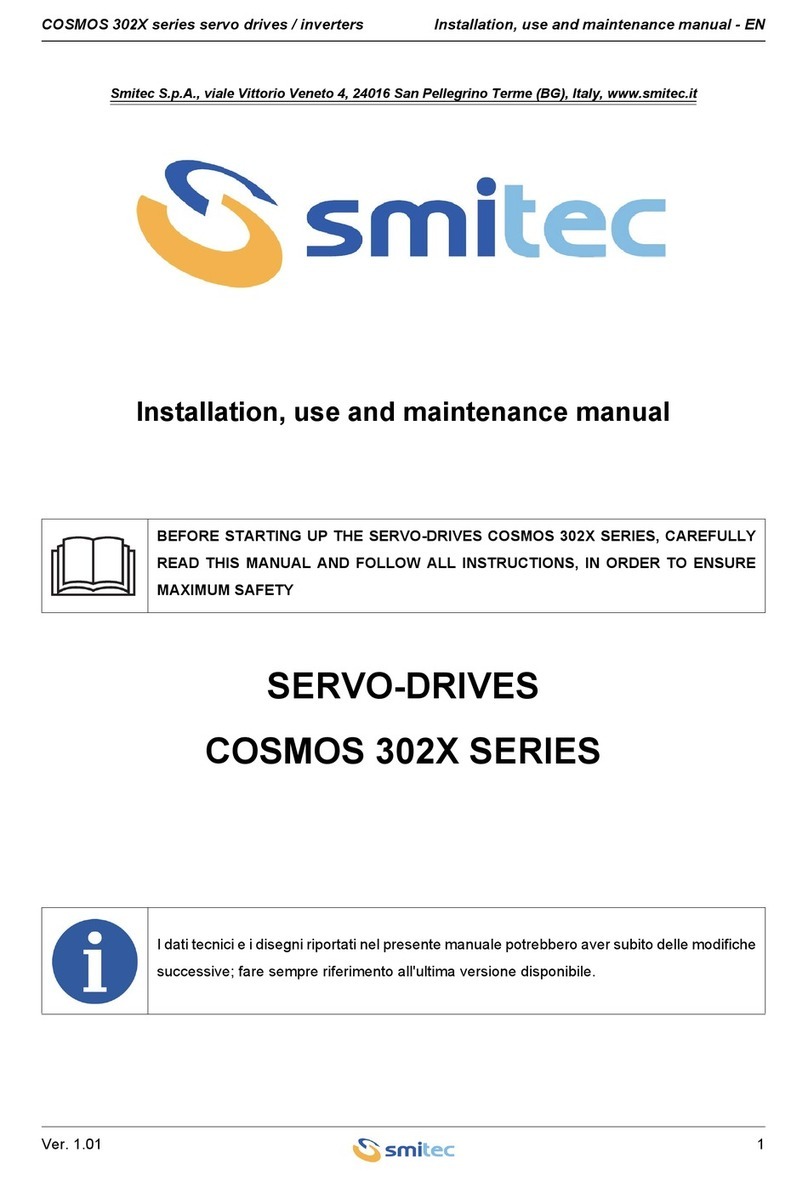
Smitec
Smitec COSMOS 302 Series Installation, use and maintenance manual
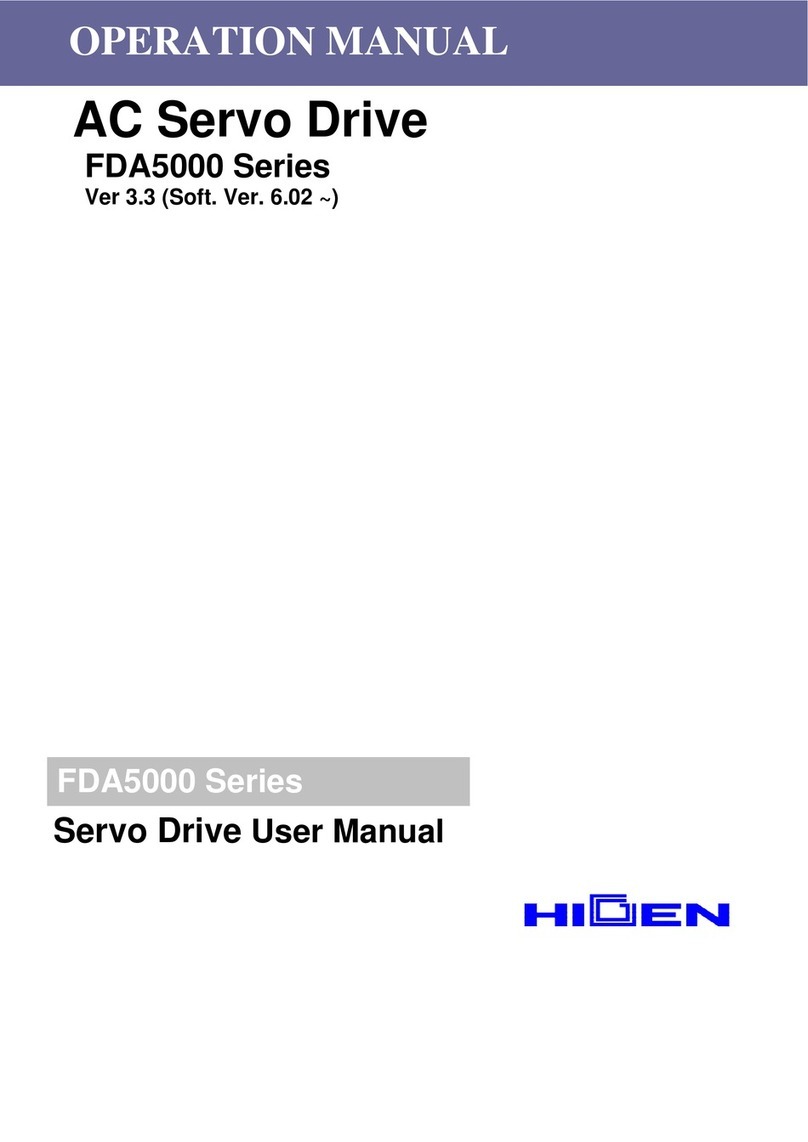
Higen
Higen FDA5000 Series Operation manual
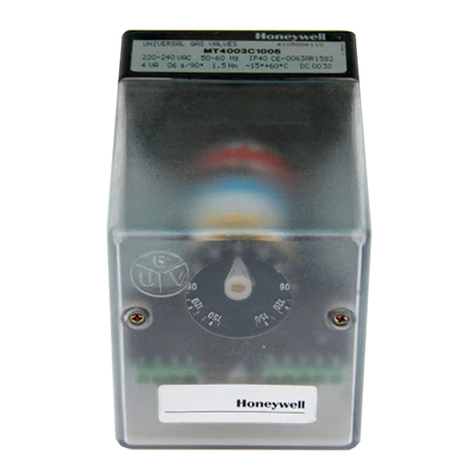
Honeywell
Honeywell MT4000 Series instruction sheet
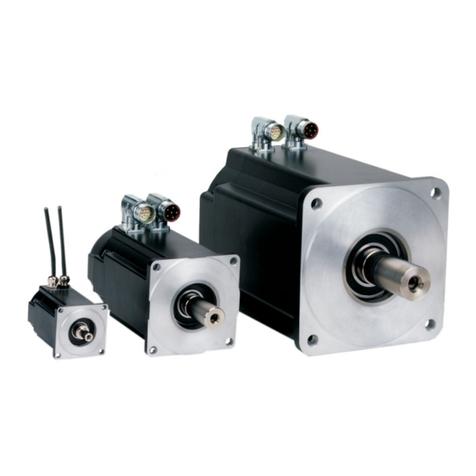
Beckhoff
Beckhoff AM3000 Series Technical description, Installation, Setup

HDT
HDT NTT 240 Installation and user guide
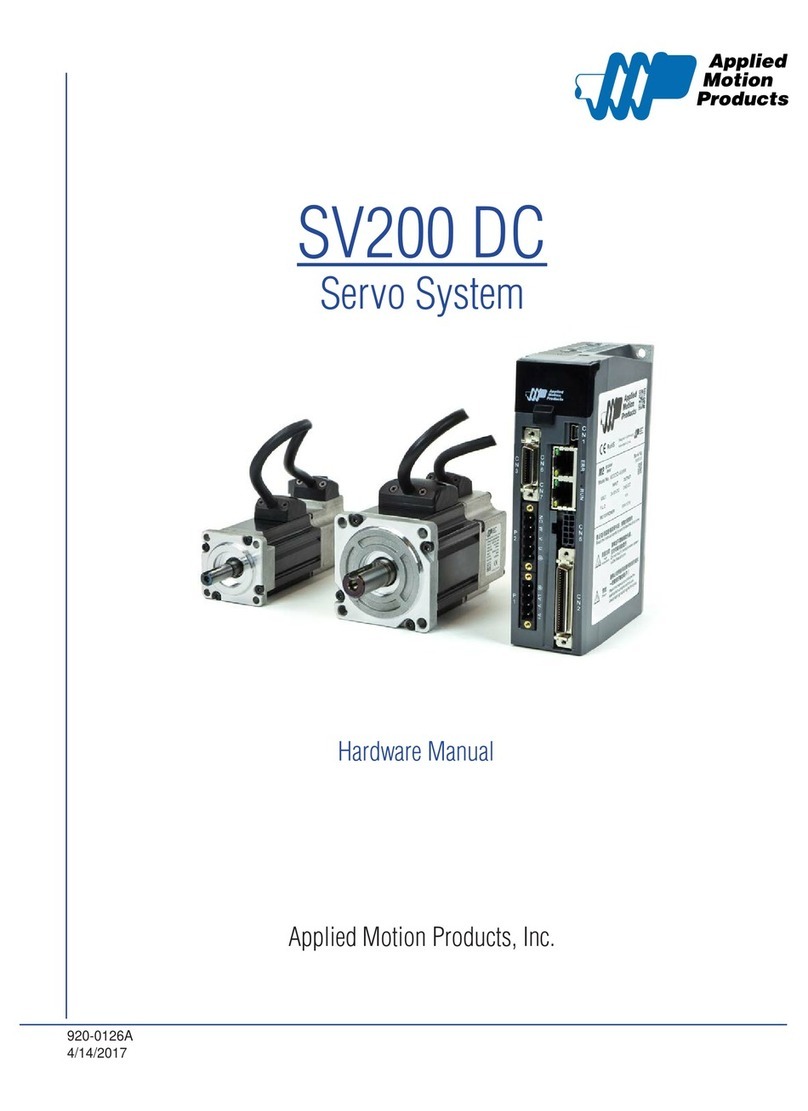
Applied Motion Products
Applied Motion Products SV200 DC Hardware manual

